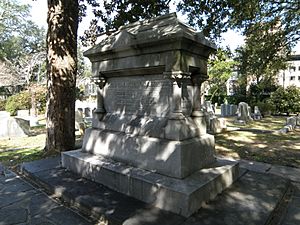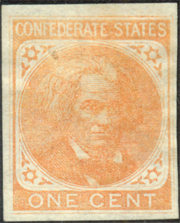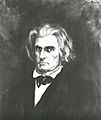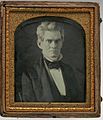John C. Calhoun facts for kids
Quick facts for kids
John C. Calhoun
|
|
|---|---|
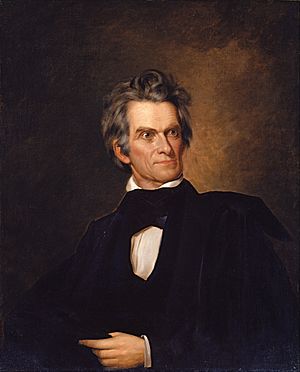
Portrait c. 1845
|
|
| 7th Vice President of the United States | |
| In office March 4, 1825 – December 28, 1832 |
|
| President |
|
| Preceded by | Daniel D. Tompkins |
| Succeeded by | Martin Van Buren |
| United States Senator from South Carolina |
|
| In office November 26, 1845 – March 31, 1850 |
|
| Preceded by | Daniel Elliott Huger |
| Succeeded by | Franklin H. Elmore |
| In office December 29, 1832 – March 3, 1843 |
|
| Preceded by | Robert Y. Hayne |
| Succeeded by | Daniel Elliott Huger |
| 16th United States Secretary of State | |
| In office April 1, 1844 – March 10, 1845 |
|
| President | John Tyler James K. Polk |
| Preceded by | Abel P. Upshur |
| Succeeded by | James Buchanan |
| 10th United States Secretary of War | |
| In office December 8, 1817 – March 4, 1825 |
|
| President | James Monroe |
| Preceded by | George Graham (acting) William H. Crawford |
| Succeeded by | James Barbour |
| Member of the U.S. House of Representatives from South Carolina's 6th district |
|
| In office March 4, 1811 – November 3, 1817 |
|
| Preceded by | Joseph Calhoun |
| Succeeded by | Eldred Simkins |
| Personal details | |
| Born |
John Caldwell Calhoun
March 18, 1782 Abbeville, South Carolina, U.S. |
| Died | March 31, 1850 (aged 68) Washington, D.C., U.S. |
| Resting place | St. Philip's Church |
| Political party | Democratic-Republican (before 1828) Democratic (1828, 1839–1850) Nullifier (1828–1839) |
| Spouse |
Floride Bonneau Calhoun
(m. 1811) |
| Children | 10, including Anna Maria Calhoun Clemson |
| Parents | Patrick Calhoun Martha Caldwell |
| Education | Yale College Litchfield Law School |
| Signature | |
John Caldwell Calhoun (March 18, 1782 – March 31, 1850) was an important American politician. He served as the Vice President of the United States for two different presidents: John Quincy Adams and Andrew Jackson. This makes him one of only two Vice Presidents in U.S. history to serve under two different presidents. Calhoun was also the first Vice President to ever resign from office, which he did on December 28, 1832.
Contents
Early Life and Education
John Calhoun was born in South Carolina. His father, Patrick Calhoun, was an immigrant from Scotland and Ireland.
When he was young, John briefly attended an academy in Georgia. After it closed, he continued his studies at home. When his father passed away, 14-year-old John took charge of the family farm and five other farms. He spent four years managing the farms while also reading and enjoying hunting and fishing. With help from his brothers, he went to Yale University in Connecticut in 1802.
Calhoun was a popular student at Yale. He read many books and was a well-known member of the Brothers in Unity debating society. He graduated at the top of his class in 1804. He then studied law at the Litchfield Law School in Connecticut. He became a lawyer in South Carolina in 1807.
Political Career
Calhoun started his political journey when he was elected to the United States House of Representatives in 1810. He strongly supported the War of 1812 against Great Britain. After the war, he suggested a plan to use government money for public projects like roads and canals.
In 1817, President James Monroe chose Calhoun to be the United States Secretary of War. In this role, he worked to organize and improve the United States Department of War.
Vice President and the Nullification Crisis
Calhoun ran for president in the 1824 election. However, no candidate won enough votes from the U.S. Electoral College. The House of Representatives then decided the election. Calhoun helped make John Quincy Adams president, and Calhoun became Vice President. But Calhoun soon disagreed with Adams. He felt Adams favored the Northern states too much.
Calhoun also did not like Adams' idea of sending a group to a meeting of South and Central American leaders. He believed the U.S. should not get involved in other countries' business. Calhoun also worried about Adams' high taxes on imported goods, called tariffs. He thought these tariffs and a stronger central government threatened the rights of individual states.
In the election of 1828, Calhoun became Andrew Jackson's running mate. He was elected Vice President again. This made him the most recent U.S. Vice President to serve under two different presidents.
Calhoun and President Jackson had a difficult relationship. Their biggest disagreement was over the Nullification Crisis. Nullification was a belief that a state could ignore, or "nullify," any federal law it thought was against the U.S. Constitution. President Jackson generally supported states' rights, but he was against nullification and states leaving the Union.
In October 1832, South Carolina decided to hold a meeting to nullify a new tariff law. On November 24, South Carolina declared both the 1832 and 1828 tariffs invalid. The state threatened to leave the United States if the government tried to make them follow the tariffs. In response, Jackson sent U.S. Navy ships to Charleston harbor. He also threatened to arrest anyone who supported nullification or secession. As tensions grew, Calhoun resigned as Vice President and became a Senator.
Later Career and Views on Slavery
Calhoun tried to become the Democratic Party's choice for president in 1844. However, he lost to James K. Polk.
He served as United States Secretary of State under President John Tyler from 1844 to 1845. In this role, he supported adding Texas to the U.S. He believed this would help expand slavery. He also helped settle a border dispute with Britain over the Oregon territory. Calhoun then returned to the Senate. He was against the Mexican–American War, a law called the Wilmot Proviso, and the Compromise of 1850. He died in 1850.
Later in his life, Calhoun was known as the "cast-iron man." This was because he strongly defended the beliefs and practices of white Southerners. He owned many enslaved people on his plantation in South Carolina. Calhoun argued that slavery was a "positive good." He claimed it benefited both enslaved people and their owners.
To protect the rights of minority groups against the majority, he suggested a "concurrent majority." This idea meant that a minority group could block proposals they felt harmed their freedoms.
Death and Legacy
John C. Calhoun died on March 31, 1850, in Washington, D.C.. He was 68 years old and died from tuberculosis. He was buried in St. Philip's Churchyard in Charleston, South Carolina.
After his death, Calhoun received many honors. However, he is now seen as a very controversial figure because of his strong support for slavery.
During the American Civil War, the Confederate government honored Calhoun on a one-cent postage stamp. This stamp was printed but never officially released.
Clemson University is also part of Calhoun's legacy. The university campus is located on Calhoun's Fort Hill plantation. He left this land to his son-in-law, Thomas Green Clemson.
Calhoun is also the name for Calhoun Community College in Alabama.
In 1957, U.S. Senators honored Calhoun as one of the "five greatest senators of all time." A Senate resolution in 2000 named him one of the "seven greatest" senators of all time.
Family Life
On January 8, 1811, John C. Calhoun married Floride Bonneau Colhoun. They had ten children together over 18 years:
- Andrew Pickens (1811–1865)
- Floride Pure (1814–1815)
- Jane (1816–1816)
- Anna Maria (1817–1875), who married Thomas Green Clemson
- Elizabeth (1819–1820)
- Patrick (1821–1858)
- John Caldwell Jr. (1823–1850)
- Martha Cornelia (1824–1857)
- James Edward (1826–1861)
- William Lowndes (1829–1858)
Images for kids
-
State historic marker at Fort Hill, Calhoun's home from 1825 until his death in 1850
-
Calhoun photographed by Mathew Brady in 1849, shortly before his death
-
Calhoun's grave at St. Philip's Church yard in Charleston
-
Confederate banknote from 1861 showing both Calhoun and Andrew Jackson
-
John C. Calhoun statue in National Statuary Hall Collection at the U.S. Capitol
See also
 In Spanish: John C. Calhoun para niños
In Spanish: John C. Calhoun para niños



